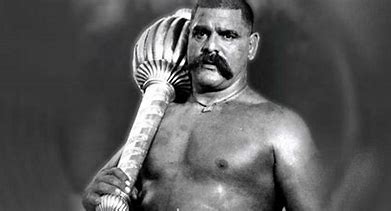Gama Pehlwan, also known as The Great Gama, was a legendary wrestler and strongman who dominated the sport of pehlwani (Indian wrestling) for over five decades. He was undefeated in more than 5,000 bouts and was considered one of the greatest wrestlers of all time by many experts and fans. He inspired generations of wrestlers and martial artists, including the iconic Bruce Lee. But how did he die? What was the cause of his death? And what legacy did he leave behind? This article will explore these questions and reveal the untold story of Gama Pehlwan.
Early Life and Training
Gama Pehlwan was born as Ghulam Mohammad Baksh Butt on May 22, 1878, in Jabbowal village of Amritsar district in Punjab, British India. He belonged to a Kashmiri Muslim family of wrestlers and was exposed to the sport from a young age. His father, Muhammad Aziz Baksh, died when he was six years old, and he was raised by his maternal grandfather Nun Pahalwan and his uncle Ida Pahalwan, who were both wrestlers themselves.
Gama showed exceptional talent and strength as a child and participated in his first strongman competition at the age of 10 in Jodhpur, Rajasthan. He competed against more than 400 wrestlers and strongmen and impressed everyone with his performance. He was declared the winner by the Maharaja of Jodhpur due to his young age and received a cash prize and the patronage of the Maharaja of Datia and the Maharaja of Patiala, who sponsored his training.
Gama’s training regimen was rigorous and demanding. He would do 5,000 squats, 3,000 push-ups, and wrestle with 40 wrestlers every day. He would also lift heavy stones and logs to develop his strength and endurance. His diet consisted of 15 liters of milk, 3 kilograms of butter, mutton, 9 kilograms of almonds, and 3 baskets of fruits daily. He also consumed a special paste made of almonds, ghee, honey, and herbs to boost his energy and health.
Wrestling Career and Achievements
Gama started his wrestling career at the age of 15 and soon became a national sensation. He defeated every wrestler he faced in India and earned the title of Rustam-e-Hind (Champion of India). He also challenged wrestlers from other countries and regions, such as Afghanistan, Iran, Turkey, Central Asia, and Europe. He traveled to England in 1910 to compete in the John Bull World Championship Tournament, where he faced some of the best wrestlers in the world. He defeated all his opponents except for Stanislaus Zbyszko, a Polish wrestler who avoided him for two days until the tournament was over. Gama was awarded a version of the World Heavyweight Championship by Lord Curzon on October 15, 1910.
Gama continued to dominate the wrestling scene for the next four decades. He faced Zbyszko again in 1928 in Patiala and defeated him in less than a minute. He also defeated other famous wrestlers such as Benjamin Roller, Jesse Petersen, Maurice Deriaz, Frank Gotch’s brother-in-law Fred Beell, Johann Lemm (Swiss champion), Bibby (Egyptian champion), Imam Baksh (his brother), Rahim Baksh Sultaniwala (his cousin), Ahmed Baksh (his nephew), etc. He also challenged other legends such as Frank Gotch (American champion), Ed Lewis (American champion), Youssuf Ishmaelo (Turkish champion), etc., but they never accepted his challenge.
Gama’s wrestling style was based on speed, agility, stamina, and technique. He would often overwhelm his opponents with his relentless attacks and pin them down with his signature move called paigah (leg lock). He was also known for his sportsmanship and humility. He would respect his opponents and never boast about his victories. He would also help young wrestlers by teaching them his skills and secrets.
Death and Legacy
Gama retired from wrestling in 1947 after the partition of India and Pakistan. He migrated to Pakistan along with his family and settled in Lahore. He suffered from a chronic heart illness for several years and died on May 23rd ,1960 at the age of 82. He was buried in the Miani Sahib Graveyard in Lahore.
Gama’s death was mourned by millions of fans and admirers across the world. He was hailed as the greatest wrestler of all time and a national hero of both India and Pakistan. He was also honored with several awards and recognitions, such as the Padma Shri (India’s fourth-highest civilian award) in 1956, the Pride of Performance (Pakistan’s highest civilian award) in 1958, and the Guinness World Record for the longest undefeated streak in wrestling history. He also has a museum dedicated to him in Baroda, India, where his stone-lifting feat is displayed.
Gama’s legacy lives on through his descendants and disciples, who have continued his tradition of wrestling and strength training. His grandson Nasir Bholu is a well-known wrestler and trainer in Pakistan, who has coached several national and international champions. His great-grandson Hamza Ali Abbasi is a famous actor and activist in Pakistan, who has also expressed his admiration for his ancestor. His brother Imam Baksh Pahalwan was also a renowned wrestler and trainer, who taught many famous wrestlers such as Dara Singh (Indian champion), Aslam Pahalwan (Pakistani champion), etc.
Gama’s influence can also be seen in other fields of sports and culture. He inspired many martial artists, such as Bruce Lee, who adopted some of his training methods and techniques. He also inspired many writers, artists, filmmakers, etc., who have portrayed him in various forms of media, such as books, comics, movies, etc. Some examples are The Man Who Would Be King by Rudyard Kipling, The Great Gama by Mulk Raj Anand, Gama Pehalwan by Prakash Mehra, etc.
Gama Pehlwan was a legend who transcended the boundaries of time, place, and culture. He was a symbol of strength, courage, honor, and excellence. He was a man who never gave up and never gave in. He was Gama Pehlwan, the greatest wrestler of all time.

